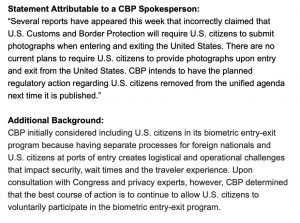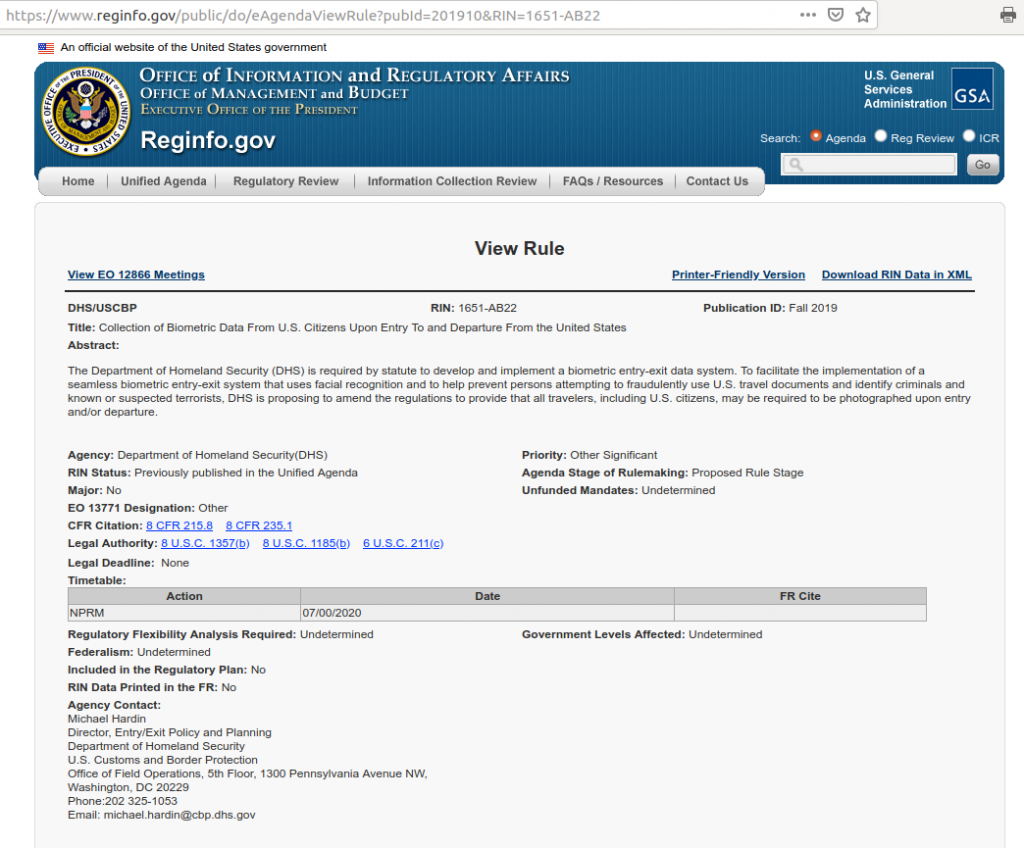Airports of the future: surveillance by design
As we’ve seen in the ongoing debate over biometric identification of travelers at Sea-Tac Airport, and as we’ve seen before elsewhere, airlines and government agencies want to pretend that each of their initiatives to identify and track travelers is a discrete, limited project, not part of any common agenda for government and commercial surveillance.
Don’t believe a word of this soothing blather. These measures are part of a conscious, deliberate, and (in their internal communications) explicit plan to deploy pervasive, integrated common-use infrastructure and data sharing for government and commercial identification and tracking purposes throughout airports and each step of an air traveler’s journey. The airline/airport/government consensus is on surveillance by design, not privacy by design.
Here’s our latest glimpse at the real thinking behind the curtain of propaganda: The leading provider of communications and IT infrastructure and services for air transportation has a guest commentary of end-of-the-year predictions for “airports of the future” on an industry news site:
Airports of the future: SITA’s 10 predictions for the next decade
by Benoit Verbaere, business development director, SITA
Passenger Terminal Today, December 12, 2019
Air transport IT provider SITA has unveiled 10 bold predictions about the technology shaping how passengers will move through the airport of the future. Benoit Verbaere, business development director, SITA, predicts major change in almost every aspect of the airport experience….
Security will be integrated into a frictionless journey.
Over the next decade, going through security will mean walking along a corridor…. Passengers and their bags will be recognized automatically as they go through automated checkpoints. Hard checkpoints will be replaced by sensor corridors….
In future airports, risk will be constantly assessed by specialist artificial intelligence (AI), using the passenger’s digital identity…. [G]overnments… will use automated collaborative systems to approve – or, in some cases, not approve – the various steps of the journey….
Everything will have tags: people, bags and cargo. And they will be tracked throughout their entire journey, whatever mode of transport they are using…
The airport will be highly connected.
Our new era of connected airports will be driven by increasingly cheap sensors, less dedicated hardware and new data lakes, fed by every device….
Across every single journey, there are 10 or more different entities that are responsible for making the trip a reality. The only way to collect all the data to make this journey seamless is through close collaboration between everyone working at an airport: the airport itself, airlines, government agencies, ground handlers, restaurants, and shops. We also need collaboration across the entire ecosystem of connected airports….
The fast and frictionless journey to, and through, the airport will make some current revenue streams, for example, parking, weaker or obsolete. Airports will, therefore, need to find new ways to augment the travel experience to replace them. Personalization will be the key….
The future of airports lies in connected, highly-intelligent and efficient operations that offer passengers … frictionless travel and rich, personalized experiences. Today’s … operational silos will dissolve, resulting in data sharing.
Is this point of view an outlier? No, just the opposite: SITA is jointly owned by airlines, and its agenda expresses its owners’ common agenda and the industry consensus.
SITA is a unique airline joint venture created by its airline owners to provide shared, common-use communications and IT infrastructure and services. SITA messaging has been for decades, and remains, the industry standard for reservations and operational communications between airlines, airport operators, contractors, and — increasingly — government agencies. Today most SITA messages are sent and received by ‘bots, via APIs, or through e-mail gateways, but airline and airport operations staff still have SITA addresses on their business cards along with, or instead of, e-mail addresses.
None of these predictions are new or considered controversial by airlines, airport operators, government agencies, and service providers including SITA and its competitors. Nor is this vision seen as dystopian — those who hold these views see the ability of governments and commercial entities to track each passenger in real time, and to seamlessly share data about travelers identities and movements between airlines, airports, and government agencies, as their utopia.
If we do not resist its implementation, this vision will be the future of travel.

